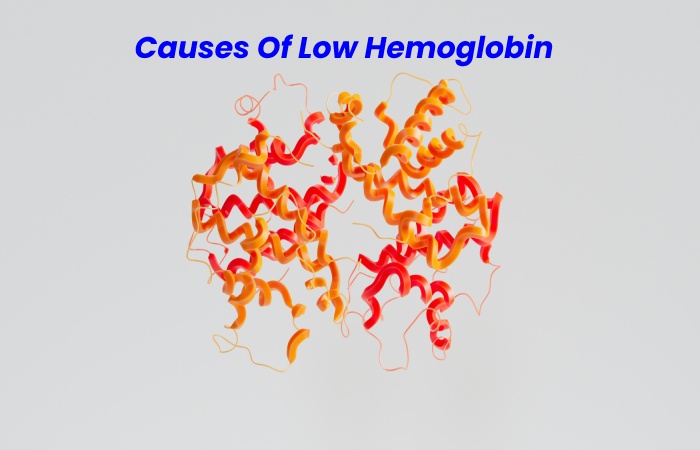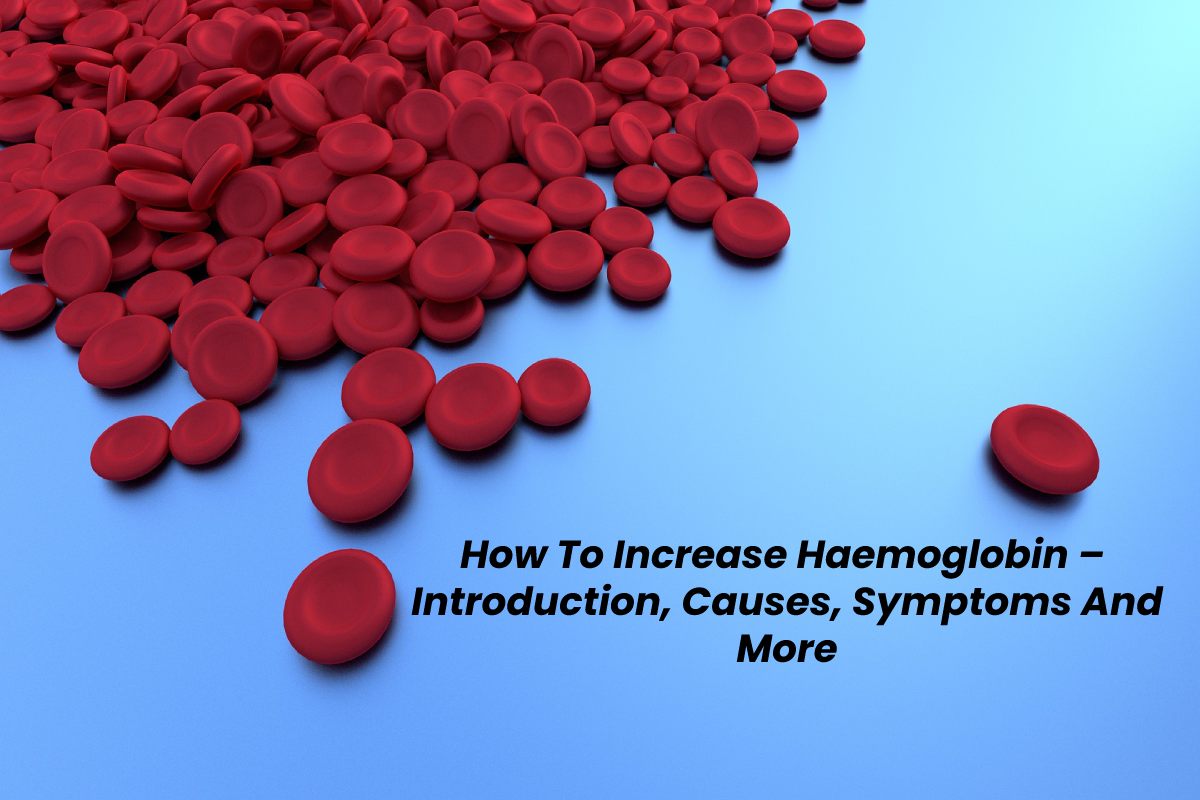Table of Contents
Haemoglobin Introduction
Haemoglobin is a protein in red blood cells or erythrocytes responsible for carrying oxygen to body tissues. Low hemoglobin can be a symptom of conditions such as anemia and an indication of various blood diseases. Therefore, it is of the utmost importance to maintain a healthy haemoglobin level for this and more.
In this opportunity, in a how to, we explain how to increase hemoglobin and the natural treatments that we can follow to help the body increase hemoglobin quickly. So read on and learn more about it!
You may also be interested in: What are the average values of hemoglobin in the blood
Causes Of Low Hemoglobin

To understand how to increase hemoglobin, first, it is necessary to know the causes of low hemoglobin. Then, any treatment will depend on why the body is not making the hemoglobin it needs.
Mild drops in hemoglobin levels are not always a cause for concern or medical, solid treatment. For example, menstruation and pregnancy are scenarios in which a drop in hemoglobin is expected.
The body makes this iron-rich protein in the bone marrow, where all other blood cells are made. Therefore, a low hemoglobin count indicates that the body is not receiving enough oxygen to function correctly.
For the bone marrow to produce hemoglobin, it needs minerals and vitamins such as:
- Iron
- B vitamins
- folate or folic acid
A deficiency in any of these substances can cause low hemoglobin. However, other causes of low haemoglobin can include:
- Blood loss through internal or external bleeding.
- Hereditary diseases.
- Bone marrow disorders.
- Immune system diseases.
Although the causes listed above are more serious, they are also less common. A nutritional deficit often hides as the main reason for low hemoglobin, so maintaining a balanced diet is key to preventing anemia or low hemoglobin.
In any case, the doctor will study the blood tests of his patients and, if the hemoglobin count is low, will determine the best procedure to follow to decipher why the hemoglobin has dropped. If you want to know more about it, check out our article on the causes of low hemoglobin.
Low Hemoglobin And Anemia: Symptoms And Consequences
Significantly low hemoglobin is one of the main symptoms of anemia, a condition in which many red blood cells in the blood drop. Anemia can result from underlying diseases, or it can result from a poor diet.
The symptoms of anemia vary dependent on the cause, but the different types of anemia and low hemoglobin often have one symptom in common: tiredness. Feeling too exhausted to perform daily activities could, but is not exclusively, a sign that something is wrong with the level of red blood cells and haemoglobin in your blood. Other symptoms include:
- dizziness
- Vertigo
- Short of breath
- Pale skin and gums
- Cold hands or feet
If you suspect that you hurt from anemia and have low hemoglobin, consult your doctor immediately. In the long term, anemia will continue to force the body’s organs to function without enough oxygen, resulting in extreme exhaustion and an inability to perform daily activities.
In addition, anemia can cause the heart to beat harder to compensate for the lack of oxygen, so the risk of heart failure increases. Low hemoglobin and anemia can lead to impaired physical, social, and emotional development in children.
To learn what your blood hemoglobin values should look like, visit our What Are Normal Hemoglobin Values article.
How To Raise Hemoglobin
Since not all causes of low hemoglobin are the same, medical treatment to determine how to raise hemoglobin will not be the same in many cases. However, these are some treatments that doctors might consider in cases where low hemoglobin is of medical concern.
Blood Transfusion
When hemoglobin is at dangerously low levels, so intense that it can cause heart damage, doctors will consider blood transfusions to rapidly raise hemoglobin and the rest of the blood cells. This can occur with hemoglobin levels at 8 or 7.
Bone Marrow Transplant
In the case of bone marrow diseases, in which the marrow cannot produce the necessary cells, a bone marrow transplant may be the best or only treatment available to cure the anaemia and restore haemoglobin levels. Meanwhile, blood transfusions can also help patients.
There are diseases of the immune system that cause the body to attack the cells created by the bone marrow. The doctor will prescribe the necessary medications to control the condition in those cases. This is also the case where low hemoglobin is caused by infections, for which the essential antibiotics will be prescribe.
Hormonal Treatments
When low hemoglobin is caused by excessive menstrual bleeding, the doctor may prescribe hormonal treatments to control the amount of blood lost during each period.
Nutritional Supplements
For the most common type of anemia, iron deficiency anemia or iron deficiency anemia, treatment will consist of taking medications to increase iron, such as supplements rich in this mineral, and making changes in the diet.
This is also when low hemoglobin is caused by vitamin B12 or folic acid deficiency. So again, supplements and dietary changes will help cure anaemia quickly.
There are situations where low hemoglobin is caused by an inability of the body to absorb the nutrients needed to create it. This can occur as a consequence of gastrointestinal or autoimmune diseases. In these cases, the consumption of high doses of the missing vitamins or minerals and their intravenous application is one of the treatments prescribed by doctors.
Home Remedies To Raise Hemoglobin
When the cause of low haemoglobin is a nutritional deficit, you can help the body to recover quickly with home remedies to raise hemoglobin. The key is to a better diet. To increase hemoglobin, we must look for foods and recipes rich in the nutrients necessary to create blood cells.
As we have mentioned before, iron is one of the main components of hemoglobin. Humans consume the iron they need through food in two forms: heme iron and non-heme iron.
Heme iron, of animal origin, is easily absorb by the body. However, heme iron, found in plant-based foods, is more difficult to absorb. In both cases, the body uses nutrients such as vitamin C to effectively take advantage of the iron in food.
Foods To Raise Hemoglobin
A diet rich in all the compounds we have mentioned will help the body maintain an average haemoglobin level. Some iron-rich foods include:
- Clams and cockles are some of the most decadent foods in iron; they contain more than the necessary daily intake.
- Whole Grain Cereals – Today, many kinds of cereal come fortified with iron and other vitamins. However, to facilitate its absorption, it is recommend to consume it with vitamin C ingredients.
- Meats: chicken, beef, fish, pork, among others, are famous for their high content of easily absorbed iron.
- Lentils are among the wealthiest legumes in the iron of vegetable origin.
Also, suppose you want to improve iron absorption in the body. In that case, it is recommend to consume it in the company of foods rich in vitamin C, such as citrus fruits, such as oranges and lemons, green leafy vegetables, such as broccoli. Other ingredients that remain high in vitamin C include chicken liver, carrots, bell peppers, walnuts, and pistachios.
If nutritional supplements are add to the diet, consuming them in the morning is advisable. However, it is not recommend to take them with coffee or chocolate, since these are inhibitors of iron absorption and are use as foods that lower haemoglobin. Instead, orange juice is an excellent option.
If low haemoglobin is cause by a deficiency of vitamins B12 or B6, these are some of the foods that can be included in the diet to ensure a greater intake of these nutrients:
- Foods rich in vitamin B6: wheat bran, rice, turkey liver, fish such as tuna or cod, chicken breast, spices such as basil and oregano, and fruits such as bananas and avocado.
- Foods unlikely in vitamin B12: shellfish, beef liver, egg yolk, octopus, mackerel, and dairies like Swiss cheese and yoghurt.
Some foods rich in folic acid are:
- Green vegetables like spinach
- Legumes such as beans, chickpeas, and peas
- Asparagus
- avocados
- Eggs
- Chicken and cow livers
- Cereals fortified with folic acid
If you want to know more foods and recipes to raise haemoglobin, do not hesitate to consult our article, Foods.
Also Read:- Health tips

